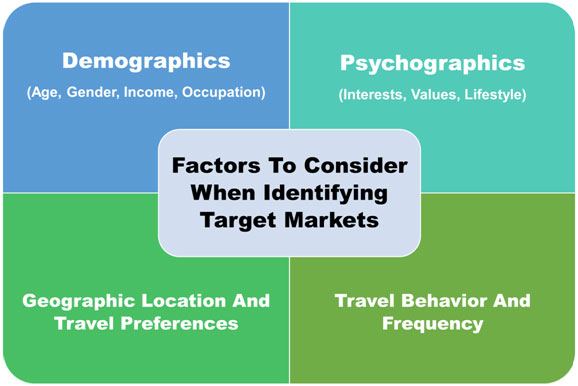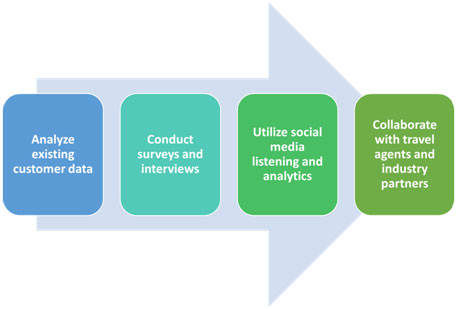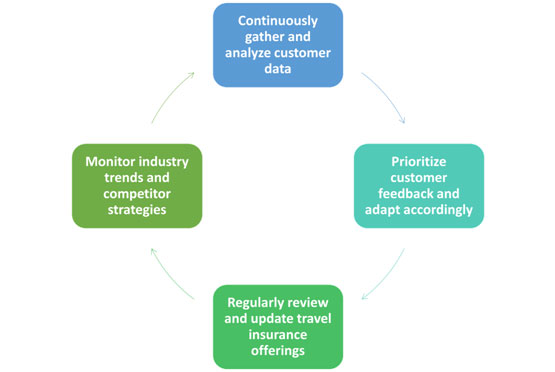
The success of travel insurance providers hinges on their ability to identify target markets and tailor insurance products accordingly. By determining the right market and aligning their products, they can effectively allocate resources, streamline marketing efforts, and ultimately set the appropriate course for their insurance business.
However, it’s all easier said than done, as many budding travel insurers are struggling to come up with a perfect strategy on how to identify target markets and tailor their products. The reality is, there’s no one-size-fits-all blueprint to achieve these goals. But certainly, there are factors, strategies, and practices they can take into account to raise the chance of success. Find out what those are as you read this article.
Travel insurance companies must understand their target markets throughout their business journey. It shouldn’t only occur at their early stages since customer needs and preferences are always bound to change. That’s why, in the course of their journey, travel insurers should constantly be on the move to identify potential markets.
There are several factors that insurers should consider when identifying target markets. These factors provide valuable insights into the characteristics and preferences of potential customers, helping travel insurers tailor their offerings better.

Demographic variables such as age, gender, income, and occupation can help identify specific segments of the population who are likely to purchase travel insurance products. Different age groups may have varying travel needs and risk profiles, while income levels can indicate the affordability of insurance products.
Psychographics involve the understanding of potential customers’ interests, values and lifestyle choices. By uncovering these factors, travel insurers can segment their target customers and make it easier for them to develop targeted marketing messages.
Geographic location is also an important factor when identifying target markets for travel insurance products. By identifying target markets based on specific regions or locations, travel insurers can tailor their products to meet the unique needs and risks to be found in those regions.
In addition, identifying the preferences of travelers, such as their preferred destinations or travel styles can help insurers tailor insurance products accordingly.
Analyzing the travel behavior and frequency of potential customers is crucial in identifying target markets. Understanding whether they are frequent or occasional travelers and the types of trips they undertake enables travel insurance providers to customize their offerings to match the specific needs and risks associated with different travel patterns.
To gain deeper insights into the travel habits and trends of travelers in different markets, read our article about “Exploring Consumer Insights In the Travel Insurance Landscape.” This article delves into the findings of our recent research studies, providing valuable information to help travel insurers tailor their offerings and effectively identify target markets.
Travel insurers can employ various strategies to effectively identify their target markets. These strategies assist in gathering relevant data and insights that can help them in their decision-making.

Analyzing the data of existing customers, which include demographics, purchase patterns, and claims history can help travel insurers determine common characteristics and preferences. These pieces of information can then be used as references for identifying target markets that closely align with their existing customer base.
Surveys and interviews are undoubtedly among the most effective means of gathering information from potential customers. Travel insurers can ask targeted questions related to travel habits and preferences, as well as the insurance needs of their existing or potential customers. In this way, insurers can gain essential insights and guide their target market identification efforts.
Leveraging the power of social media allows travel insurers to engage with the public and obtain insights from potential customers. Platforms like Facebook and Instagram offer a wealth of information about customer preferences and behaviors. Through these platforms, travel insurance providers can discover the different types of customers they can target.
Numerous benefits can be obtained by travel insurers when partnering with the experts in the industry. In the aspect of identifying target markets alone, insurers can tap into the expertise of travel agents and industry partners in order for them to realize the potential markets that align with their offerings.
Collaborating with these industry experts can simplify and perhaps lessen the overall cost a travel insurance company is allotting into its target market identification efforts.
Similar to understanding and identifying target markets, tailoring insurance products is not just a one-time process, but a cycle. For that reason, travel insurance providers need to observe several practices so that they can effectively tailor their products appropriately.

Here are some of the best practices that travel insurers can observe for customizing their travel insurance products:
It goes without saying that regular data gathering and analysis is an inherent step in adapting into the ever-evolving customer preferences and trends. With this data-driven approach, travel insurers can catch up with the changing needs of customers and enable them to make informed decisions regarding product customization.
Travel insurers should be proactive in seeking and valuing customer feedback. This is a crucial step in making sure that insurance offerings are always in line with what the customers really need. Listening to customer suggestions and complaints allows travel insurance providers to adapt their offerings to better meet customer expectations and improve overall satisfaction.
Of course, it should not just end with one update. Travel insurers must also conduct periodic reviews of their offerings to ensure that their products remain relevant and competitive. Regular updates help address emerging risks and incorporate customer feedback for continuous development.
Observing competitor strategies and staying informed about the latest trends in the industry give travel insurers the essential knowledge about the current market demands. Taking advantage of this knowledge can enable them to distinguish themselves from their competitors, giving them a competitive edge.
Understanding target markets and customizing insurance products are not one-time endeavors, but ongoing processes that require dedication and adaptation. By incorporating the factors, considerations, and strategies discussed in this article, travel insurers can position themselves for success, build strong customer relationships, and thrive in the dynamic travel insurance sector.